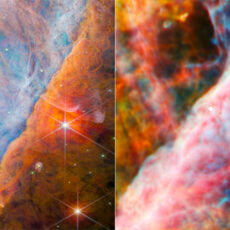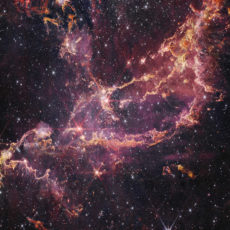
Gaze upward on a clear night, and the stars feel eternal, a quiet backdrop to our fleeting lives. Now, consider a snapshot of the cosmos so deep it captures light that’s been traveling since the universe was a toddler. The James Webb Space Telescope has delivered just that—a mesmerizing image of galaxy cluster Abell S1063, a celestial heavyweight 4.5 billion light-years away in the constellation Grus.

Abell S1063, a galactic heavyweight, bends spacetime like a cosmic funhouse mirror, its gravity warping light from far-off galaxies behind it in a trick called gravitational lensing. Those glowing, twisted arcs framing the cluster aren’t doodles—they’re ancient galaxies, their light stretched and amplified into view. “Abell S1063 was previously observed by the NASA/ESA Hubble Space Telescope’s Frontier Fields programme,” the European Space Agency (ESA) notes. “It is a strong gravitational lens, focusing light from even more distant galaxies.”
- LEGO NASA Space Set - This adult LEGO set features the Space Shuttle Discovery and the Hubble Space Telescope from NASA’s 1990 STS-31 mission,...
- Solar System Exploration - Unlock the mysteries of our solar system with this engaging 2,354-piece project, packed with authentic details and...
- Shuttle Features Galore - The space shuttle model has an opening payload bay, retractable landing gear, opening cockpit, moving elevons, space arm,...
This “deep field” image is a marathon effort, with Webb’s Near-Infrared Camera (NIRCam) soaking up 120 hours of infrared light across nine wavelengths to craft the telescope’s deepest single-target shot yet. The result? A cosmic tapestry packed with galaxies, from the blazing elliptical at the core to faint, curved streaks from the Cosmic Dawn, when stars and galaxies first sparked to life. “Focusing such observing power on a massive gravitational lens, like Abell S1063, therefore has the potential to reveal some of the very first galaxies formed in the early Universe,” the ESA says.
Why’s this a big deal? Those ancient galaxies, some just 200 million years post-Big Bang, are like cosmic baby photos, and the GLIMPSE program (led by H. Atek and J. Chisholm) is digging into them to unravel the universe’s first stars. Early finds are already spotlighting these primordial galaxies, the seeds of every star and planet we know. Visually, it’s a knockout—the central galaxy burns bright, swarmed by smaller ones and those eerie, lensed arcs, with foreground stars flashing diffraction spikes and red, warped lines hinting at a chaotic cosmic youth.
This image is pure human ambition, with Webb’s knack for grabbing 13-billion-year-old light feeling like wizardry backed by NASA, ESA, and CSA’s engineering grit. The GLIMPSE data is sparking papers and probing how galaxies grew from tiny flickers to cosmic giants. Every pixel’s a chapter in our origin story, tying us to a universe that’s anything but static—a wild, evolving saga we’re just starting to grasp.
[Source]












